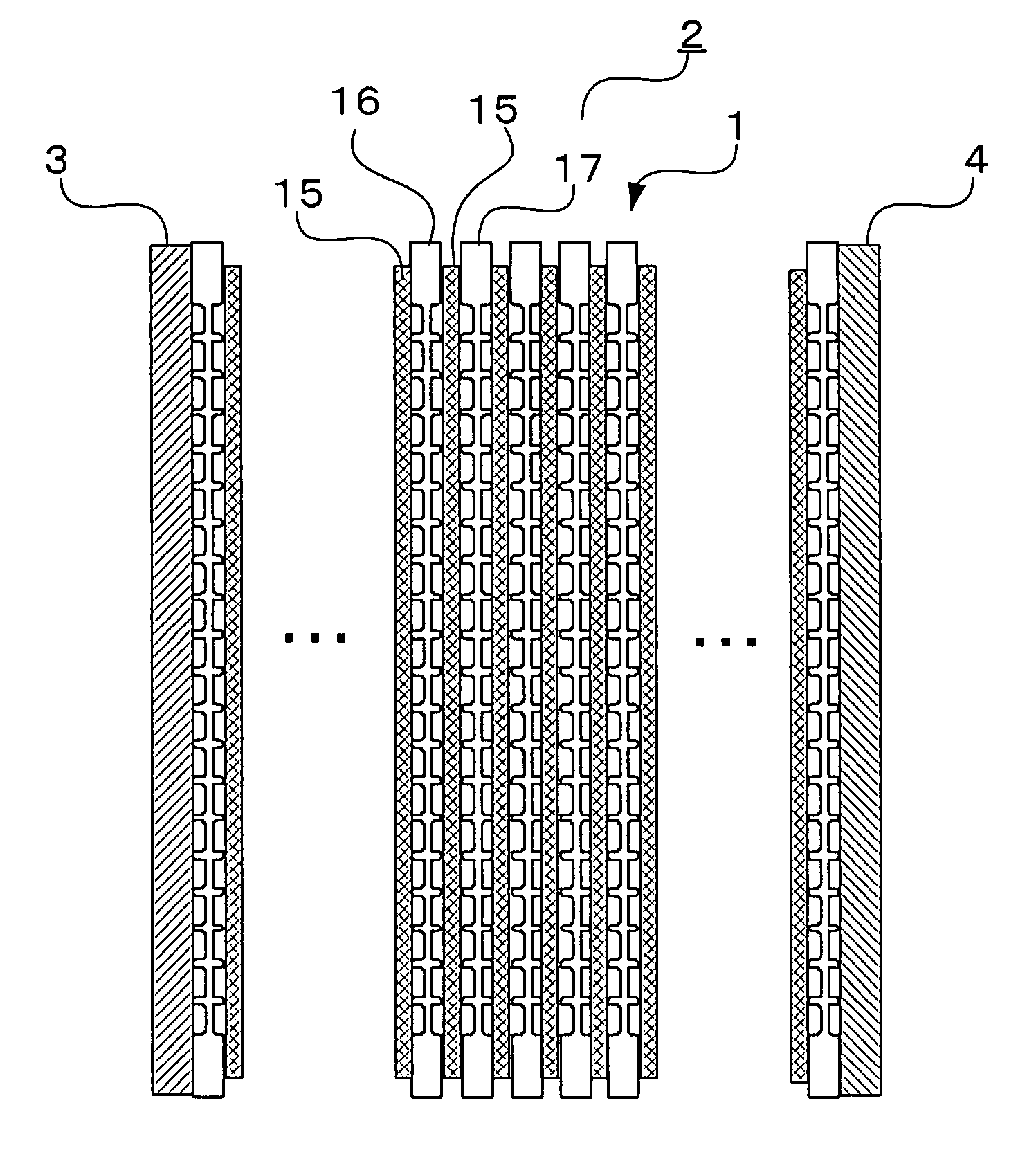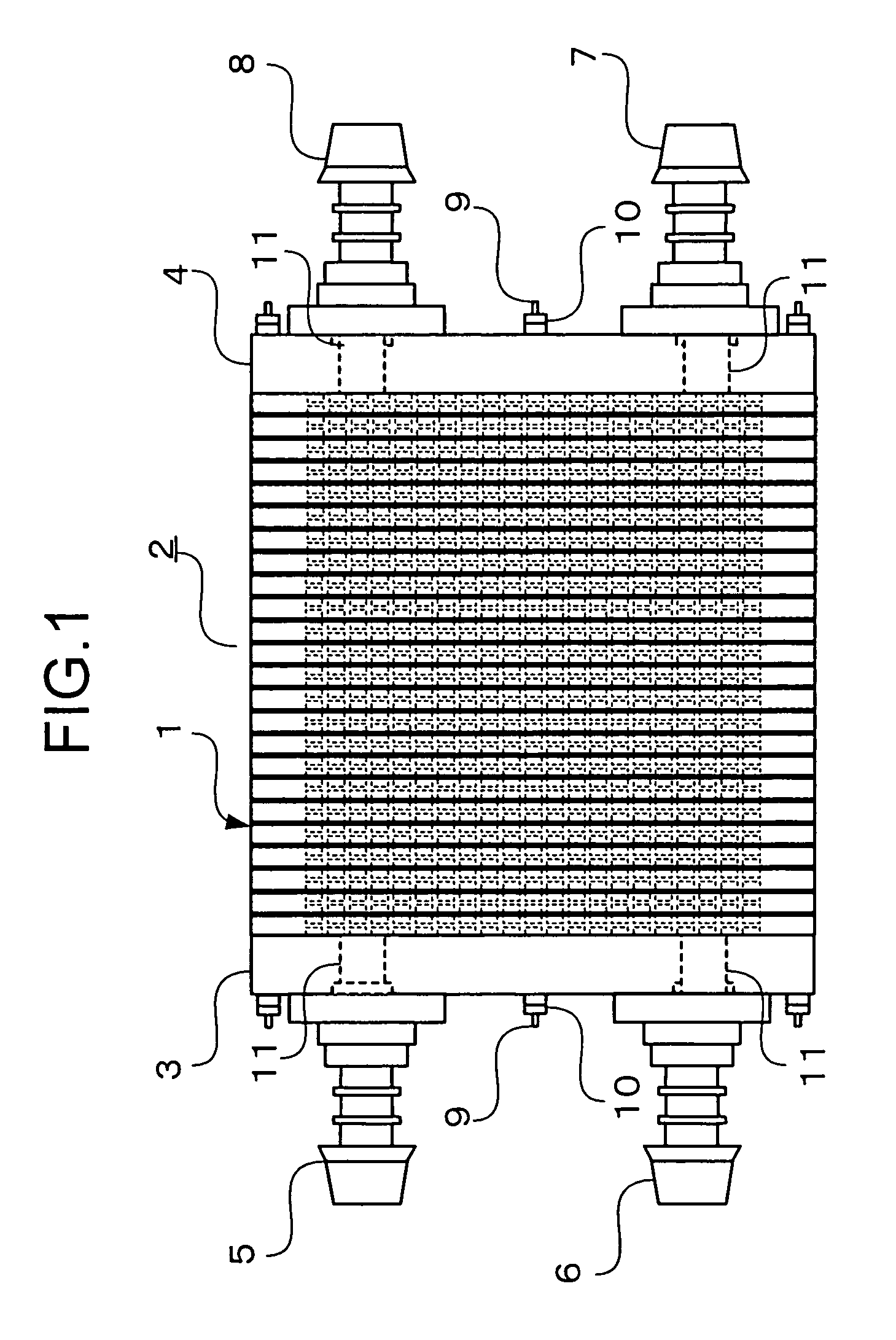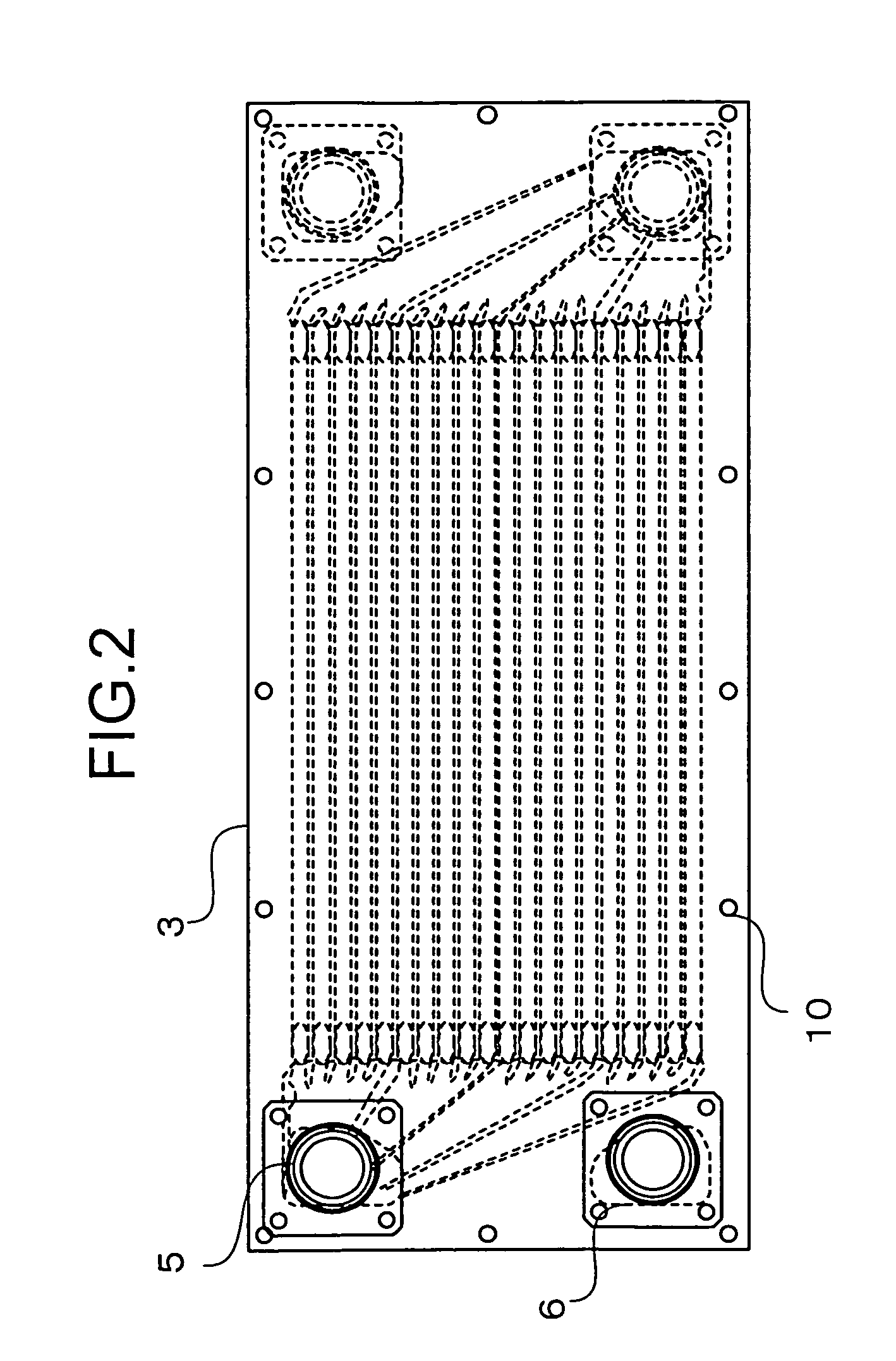Temperature/humidity exchanger
a technology of temperature/humidity exchanger and exchanger, which is applied in the direction of fuel cell details, trickle coolers, machines/engines, etc., can solve the problems of extra cost, achieve the effect of reducing the dew point of the output gas, improving temperature efficiency and humidity efficiency, and restricting pressure loss
- Summary
- Abstract
- Description
- Claims
- Application Information
AI Technical Summary
Benefits of technology
Problems solved by technology
Method used
Image
Examples
embodiment 1
[0029]FIG. 1 is a side view of a temperature-humidity exchanger according to Embodiment 1 of the present invention. FIG. 2 is an upper plan view of the temperature-humidity exchanger of Embodiment 1. FIG. 3 is a partial cross-sectional view of temperature-humidity exchange cells. FIG. 4 is a plan view of a dry gas separator of the temperature-humidity exchange cell. Note that, in the following description, dry gas is described as air in which temperature is approximately room temperature and relative humidity is approximately zero. Further, wet gas is described as oxidizer outlet gas of a polymer electrolyte fuel cell, for example, in which temperature is 70° C. or more and relative humidity is 90% or more.
[0030]As shown in FIGS. 1 and 2, a temperature-humidity exchanger of Embodiment 1 includes a temperature-humidity exchange stacked body 2 in which a plurality of temperature-humidity exchange cells 1 are stacked, an inlet retainer plate 3 and an outlet retainer plate 4 which sandw...
embodiment 2
[0071]FIG. 10 is an upper plan view of a temperature-humidity exchanger of Embodiment 2 of the present invention. FIG. 11 is a plan view of a dry gas separator of a temperature-humidity exchange cell according to Embodiment 2.
[0072]The temperature-humidity exchanger according to Embodiment 2 is different from the temperature-humidity exchanger according to Embodiment 1 in positions of the dry gas inlet manifold 5, the dry gas outlet manifold 7, the wet gas inlet manifold 8, and the wet gas outlet manifold 6, and is the same thereto in other constructions. Accordingly, a description of the same portions is omitted.
[0073]As shown in FIG. 10, the dry gas inlet manifold 5 and dry gas outlet manifold 7 of the temperature-humidity exchanger according to Embodiment 2 are provided at positions axisymmetric to each other with respect to a long-side center line.
[0074]In the dry gas separator 16 of Embodiment 1, the dry gas supply manifold 35 and the dry gas exhaust manifold 36 are provided at...
embodiment 3
[0080]FIG. 12 is a side view of a temperature-humidity exchanger according to Embodiment 3 of the present invention. The temperature-humidity exchanger according to Embodiment 3 is different from that of Embodiment 1 in that the temperature-humidity exchange stacked body of Embodiment 1 is divided by half, and that a direction in which the dry gas is caused to flow in one of the temperature-humidity exchange stacked bodies is reverse to a direction in which the dry gas is caused to flow in the other temperature-humidity exchange stacked body. The other constructions are the same as those of Embodiment 1, so a description of the same portions is omitted.
[0081]As shown in FIG. 12, in the temperature-humidity exchanger of Embodiment 3, two temperature-humidity exchange stacked bodies on the upper and lower sides 41a and 41b are sandwiched by the inlet retainer plate 3 and the outlet retainer plate 4. Between a lowermost dry gas separator 42 of the temperature-humidity exchange stacked ...
PUM
| Property | Measurement | Unit |
|---|---|---|
| pressure loss | aaaaa | aaaaa |
| temperature | aaaaa | aaaaa |
| thickness | aaaaa | aaaaa |
Abstract
Description
Claims
Application Information
 Login to View More
Login to View More - R&D
- Intellectual Property
- Life Sciences
- Materials
- Tech Scout
- Unparalleled Data Quality
- Higher Quality Content
- 60% Fewer Hallucinations
Browse by: Latest US Patents, China's latest patents, Technical Efficacy Thesaurus, Application Domain, Technology Topic, Popular Technical Reports.
© 2025 PatSnap. All rights reserved.Legal|Privacy policy|Modern Slavery Act Transparency Statement|Sitemap|About US| Contact US: help@patsnap.com



